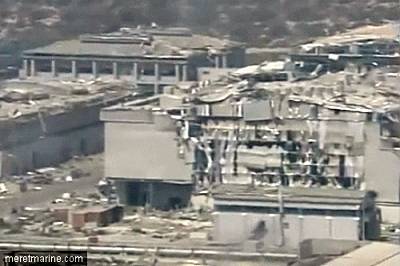ARLINGTON, Va., April 18, 2011 — National Guard members from four states today are supporting civil authorities in Texas as they battle more than 30 wildfires threatening lives and property.
Drought conditions have caused a reported 32 wildfires in Texas, National Guard officials reported.
Under the direction of the Joint Forces Air Component Commander for Air Forces Northern based at Tyndall Air Force Base, Fla., four C‑130 Hercules aircraft equipped with firefighting capabilities are responding to the Texas wildfires.
Texas National Guard members are supporting civilian authorities with personnel and four UH-60 Black Hawk helicopters using buckets to drop water in multiple counties, officials reported.
The C‑130s are basing operations at Dyess Air Force Base in Abilene, Texas.
Two of the four aircraft are from the California Air National Guard’s 146th Airlift Wing, a third is from the Wyoming National Guard’s 153rd AW and a fourth is from North Carolina’s 145th AW.
California and North Carolina are providing additional support aircraft, officials reported.
All are expected to arrive today to begin firefighting operations.
The Modular Airborne Fire Fighting System, or MAFFS, is a self-contained, reusable aerial firefighting system loaded into the cargo bay of a C‑130 aircraft, which effectively turns the airplanes into aerial firefighting tankers.
Officials said the system can discharge 3,000 gallons of water or fire retardant in less than five seconds, covering an area one-quarter of a mile long by 60 feet wide. Once the load is discharged, it can be refilled in less than 12 minutes.
Typically, the aircraft will spray along the leading edge of a fire in order to check its advance. The fire retardant has fertilizer mixed in to promote re-growth in a burned area. If needed, MAFFS aircraft can spray water directly onto a fire.
Four Air National Guard and U.S. Air Force Reserve units operate MAFFS.
To help prevent the spread of fires, two additional MAFFS currently flying missions from Laughlin Air Force Base in Del Rio, Texas, to Coahuila, Mexico, also are releasing fire retardant in Texas until the four relief C‑130s arrive.
The MAFFS is owned by the U.S. Forest Service, one of several federal and state government agencies and organizations with roles and responsibilities in fire-suppression operations that comprise the National Interagency Fire Center in Boise, Idaho.
The Defense Department is flying at the request of the fire center, officials said. The center requests MAFFS assistance only after committing all other aerial firefighting resources to a fire emergency.
Texas has been under a state emergency declaration since Dec. 21, 2010, because of extremely dry weather and wildfires, officials reported. The declaration makes all state resources available to the Texas Emergency Management Agency.
The Texas wildfire support is one of numerous current National Guard domestic and overseas operations, officials reported. Currently, Guard members are providing flood support in Minnesota and North Dakota, protecting critical infrastructure in New York, supporting the Deepwater Horizon oil spill recovery in Louisiana and fulfilling other domestic missions.
In addition to local responses, the Guard is involved in counterdrug operations and ongoing Southwest border operations in support of the U.S. Border Patrol.
Meanwhile, more than 45,000 Guard members are currently serving in Afghanistan, the Balkans, Guantanamo Bay, Iraq, the Sinai Desert and elsewhere.
Source:
U.S. Department of Defense
Office of the Assistant Secretary of Defense (Public Affairs)

 von
von 